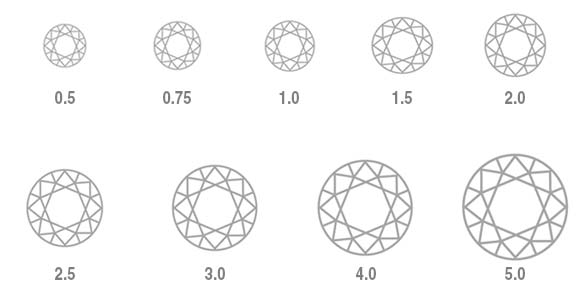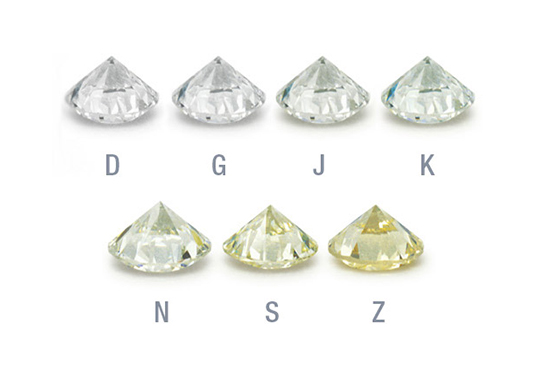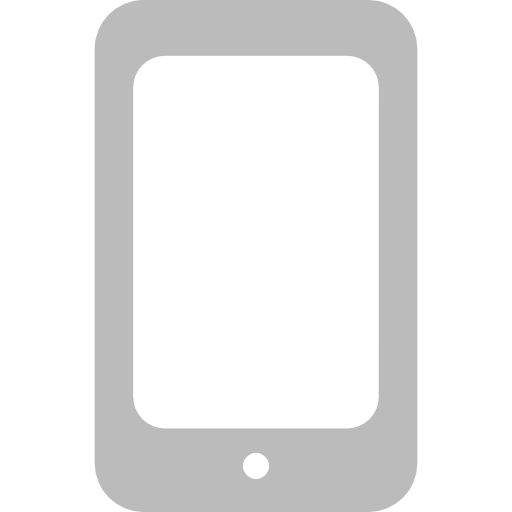
Diamond Education Guide
If you’re studying up on diamonds, one of the most important things to remember is that not all diamonds are created equal as each and every stone is unique. There are a wide range of shapes sizes, colours and internal characteristics that determine both the appearance and value of diamonds.
Every polished diamond is of value. The rarity of that diamond is one of the elements that contributes to its value. Particular characteristics are rarer, and therefore more valuable, than others. Professional jewellers assess and evaluate these characteristics systematically in order to compare different diamonds and establish their value.
The grading system, created by the GIA more than half a century ago, is essential to determine value. The four most important qualities were identified as clarity, colour, cut and carat weight or as they’re more commonly known, the 4Cs. Each of these qualities contribute to the value of an individual diamond.
CARAT WEIGHT
Carats, not to be confused with karats of gold, describe the weight of a diamond. Each carat is subdivided into 100 points. A point is the equivalent of a fifth of a gram, meaning that 1 whole carat is approximately 2 grams.
The higher the carat weight, the higher the value as diamonds of a larger size occur rarely in nature. Diamonds that have the same carat weight may not have the same value as it may perform better or worse in terms of the other desirable characteristics.


Colour: Grading From D-Z
The rarest white diamonds have no colour at all, but some do exhibit slight colour which is based on a D to Z scale. This grading system is used internationally to assess the value of diamond based on their colouring.
The most valuable diamonds are those that have a ‘colourless’ grading, which are D, E and F. These are some of the rarest diamonds on the market.
Clarity: The Inner Beauty
Many diamonds appear to be perfectly sparkly to the naked eye but under 10x magnification, plenty of impurities can be revealed, including clouds/feathers and tiny crystals. The internal characteristics of a diamond are one of the main indicators of value, making the rarest diamonds very difficult to find.
Diamonds classified as Flawless (FL) or Internally Flawless (IF) are the rarest levels of clarity and must be graded by a certified gemologist to ensure accuracy. Even if you cannot tell the difference yourself, these tiny differences can have a significant impact on rarity and consequently on value too. The chart below shows the international grading system.
At Midas Jewellery we take pride in finding rare and valuable diamonds that have no inclusions visible to the naked eye.


Cut : Why Weight Must Be Sacrificed for Brilliance
The sparkle of a diamond is determined by its cut. A well-cut diamond will be well proportioned, symmetrical and beautifully polished. Master cutters are capable of revealing a diamond’s immense beauty and brilliance through meticulous techniques and methods. As light enters the stone, it is reflected off the different facets like a mirror, creating an astonishing shine.
It is important that the diamond cut must not be too deep or shallow as this will limit the sparkle of the stone. This beauty can only be achieved by cutting away a lot of the rough diamond, which means a loss of carat weight. However, size alone does not ensure brilliance.






